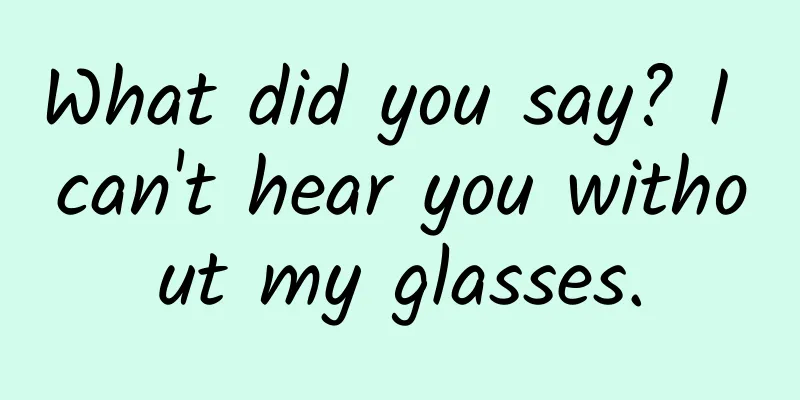Why do many people think Mona Lisa is smiling?

|
Leviathan: This woman has been watched by countless people. People have speculated and studied her mysterious smile. Some say Mona Lisa is a man's, and some say it is Leonardo da Vinci's. These are nothing. Professor Vito Franco of Palermo University in Italy used ophthalmology to analyze and study Leonardo da Vinci's paintings. Through careful observation of the epidermis of Mona Lisa's left eye, he found that the protagonist in the painting had high cholesterol in her body (http://www.telegraph.co.uk/culture/art/art-news/6939696/Mona-Lisa-smile-due-to-very-high-cholesterol.html)... The Isleworth Mona Lisa is an oil painting by Leonardo da Vinci that has been claimed to be from the early 16th century, although it has not been fully verified. Freud once interpreted Mona Lisa's smile as the painter's sentimental remembrance of his mother. Others describe it as innocent, seductive, or even trance or sad. Some scholars also pointed out that the reason why Mona Lisa looks like she is not smiling is because Leonardo da Vinci used the illusion of the eyes. The center of the eyes is generally sensitive to brighter areas, while the edges are sensitive to darker areas. People generally recognize smiles mainly by the shape of the lips and eyes. Leonardo da Vinci used the shadow formed by Mona Lisa's lips. So, do you think she is smiling or not? By Georgina Lawton Translation/Gift Proofreading/Shi Wei Original article/www.bustle.com/p/is-the-mona-lisa-smiling-science-has-put-this-age-old-mystery-to-rest-44529 (Stares at it for ten minutes) One of the world's most famous paintings, Leonardo da Vinci's Mona Lisa has fascinated and perplexed scholars and art lovers around the world for centuries. The big question is, is Mona Lisa smiling? Many people have wondered, but no one has been able to give a definitive answer, until now. Thanks to exciting new research, the elusive expression on Mona Lisa's face has finally been deciphered. The Louvre Museum in Paris, home to the masterpiece, states on its website: The history of the Mona Lisa is shrouded in mystery (just like the expression on her face). No one really knows "for sure" what Leonardo painted the painting about, or who commissioned it; the most accepted theory is that the painting was begun in Florence around 1503 and depicts Lisa Gherardini, the wife of a Florentine silk merchant named Francesco del Giocondo. This is how the painting's lesser-known name, La Gioconda, came about. However, according to the museum's website, the painting does not appear to have been commissioned in Florence. Instead, it is believed that Leonardo took the painting to France, and when the artist died, it entered the collection of King François I of France. Now, after years of speculation about the mysterious expression on Mona Lisa's face, the Medical Center of the University of Freiburg, the Institute of Psychology of the University of Freiburg and the Institute for Frontiers in Psychology and Mental Health (IGPP) in Freiburg, Germany may have solved the problem once and for all. According to the study, viewers apparently have a variety of different ways of interpreting the painting, so it can be said that Mona Lisa's face can show almost any expression you want. And the researchers found that almost all of the study participants thought Mona Lisa was happy. The scientists, led by Dr. Juergen Kornmeier of the University of Freiburg and his colleague Ludger Tebartz van Elst (senior chief physician at the Department of Psychiatry and Psychotherapy at the University of Freiburg Medical Center), believe that this experiment proves that people tend to see the happy part first even if there is no happy expression . In their test, they provided eight images of the Mona Lisa's mouth with different curvature gradients: four of them appeared slightly "happier" compared to the original, and the other four appeared slightly "sader." The picture shows 5 Mona Lisa with different mouth corner curvatures (S1 is the saddest, S13 is the happiest) The subjects were randomly assigned to view the above eight images plus the original, a total of nine images. Twelve subjects were asked to rank the nine images from sad to happy, repeating this 30 times, and rate the certainty of their ranking. The researchers found that 97% of the time, the original and the other eight images of Mona Lisa's mouth were considered happy. More importantly, study participants were able to identify "happy faces" more quickly than "sad faces." Dr. Kornmayer told Science Daily, "It seems that our brains prefer positive facial expressions." Interestingly, in a second experiment, the researchers arranged the nine images in a new order: the original image was designated the "happiest," the image with the smallest curvature of the mouth in the previous experiment was designated the "saddest," and the other seven images in the middle were ranked between these two. The subjects judged that after seeing the entire set of images, each version looked sadder than the previous one. "The data shows that our perception is not absolute. For example, whether something is sad or happy depends more on the rapidly changing environment," Dr. Kornmayer continued. " We don't have an absolute fixed scale for happiness or sadness in our minds. " An unrelated study at the University of Wisconsin-Madison in 2002 yielded similar results, when psychologist Seth Pollak analyzed the emotional responses of abused children. The children were divided into two groups, one with a history of abuse and the other without. They looked at a number of faces and then labeled the faces with emotional labels based on the emotions they felt. The children who had experienced misfortune were more likely to think that the faces were "angry" and actually felt fear or sadness. The researchers concluded that our perception of basic emotions is not innate, and it is even better to say that personal experience changes the way we understand emotions. Notes: ①http://www.nature.com/articles/srep43511 ②http://news.wisc.edu/experience-alters-how-we-perceive-emotion/ |
<<: Don't worry, drinking a few sips of milk tea won't make you fat! But the premise is...
>>: Special: Mountains and rivers are wallpapers everywhere
Recommend
The “knowns” and “unknowns” about asymptomatic infections
"Asymptomatic infections" have become a...
The gamma photon scientific data of the "Wukong" dark matter particle detection satellite is officially released
On September 7, 2021, the National Space Science ...
WeChat product analysis report!
one. Product Information 1. Product Name: WeChat ...
Super Typhoon Xuanlannuo, what is its origin?
Mixed Knowledge Specially designed to cure confus...
WeChat Mini Program Visual Development: A Quick Start Guide for Individual Developers
With the vigorous development of mobile Internet,...
Does the "demon boy" Nezha have ADHD? You will understand everything after reading this!
In the hit movie Nezha: The Devil Boy Conquers th...
Weibo Fantong & self-media traffic, how to make 1 million per month?
Preface | As everyone has experienced—— iPhones h...
Zhongshentong - How to get an account with over 10,000 followers in 15 days, 31 practical courses on how to create a hit account
Zhongshentong - How to get more than 10,000 follo...
After four tests, how is iOS15.2 polished?
This is a very strange thing. For iPhone 12 and i...
Gongzi Yi丨"100 Kinds of Life" Short Video Creation Camp
Gongzi Yi丨"100 Kinds of Life" Short Vid...
The flour is chewy, white and delicious! Is it because of "technology and hard work"?
The staple food of many families in my country is...
Introduction to Bidding Ads and Access Industries at Station B
Introduction to B station advertising Bilibili ad...
How can fission posters quickly acquire accurate users?
In fact, many people rarely think about these two...
Product operation, understand the product points tiering system in one article!
The purpose of establishing a membership system i...









